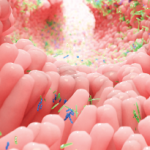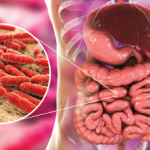IL-17, a cytokine secreted by activated T cells, was first discovered by French scientists in the early 1990s. By the time of Dr. Landrish’s experiments, “we already knew IL-17 levels were elevated in patients with MS and RA,” Dr. Cua explained, “and thought that they were probably highly pathogenic.”
Dr. Cua said that at that time the field’s dogma was that Th1 cells were the only ones responsible for the induction of the autoimmune disease cascade. But Dr. Landrish’s experiments on Th17 “told us that there’s another subset of T cells that could drive autoimmune disease,” he said. “It made us completely rethink autoimmune pathogenesis.”
RA Research Sheds Some Light
Around that time, Dr. Cua teamed up with Hiroshi Takayanagi, PhD, a researcher in the immunology department at the University of Tokyo, to explore Th17’s possible role in RA. They knew that, as part of the pathogenesis of RA, activated T cells cause osteoclasts to destroy bone. What wasn’t known was how the T cells initiate this process. After several years of work, the team found that Th17 cells were responsible for linking T-cell activation with bone resorption, and that both IL-23 and IL-17 were crucial in the bone destruction phase of RA. They suggested that Th17 would be a powerful therapeutic target for RA (J Exp Med. 2006; 203:2673-2682).
“With this discovery, things really were beginning to make sense,” Dr. Cua said, because it showed that there was another immune response—other than the Th1 pathway—that could be responsible for chronic inflammatory diseases. “The key message was that bone destruction is associated with IL-23/17 pathway.”
The next phase of Dr. Cua’s research, beginning about 2003, was to try to understand the cellular regulation of Th17 cells. He performed analyses of more than 30,000 genes to look for the genes responsible for producing the transcription factors that regulated Th17, and found about six that were “specifically expressed in IL-17–producing cells and had no known functions,” he explained (Nat Immunol. 2007;8:950-957).
Making Sense of Th17
Finally, Dr. Cua discussed the possible non-pathogenic functions of Th17 cells. “A mentor told me once, ‘You can’t have a population of T cells whose only job is to induce autoimmune diseases. It doesn’t make any sense,’ ” Dr. Cua recalled. So what useful purpose could Th17 cells have? Dr. Cua looked at where in the living organism the cells are normally expressed. The primary spot is mucosal tissue. “So we’re basically saying that IL-17 cells are not always pathogenic. They have an important role in gut homeostasis,” he said.

